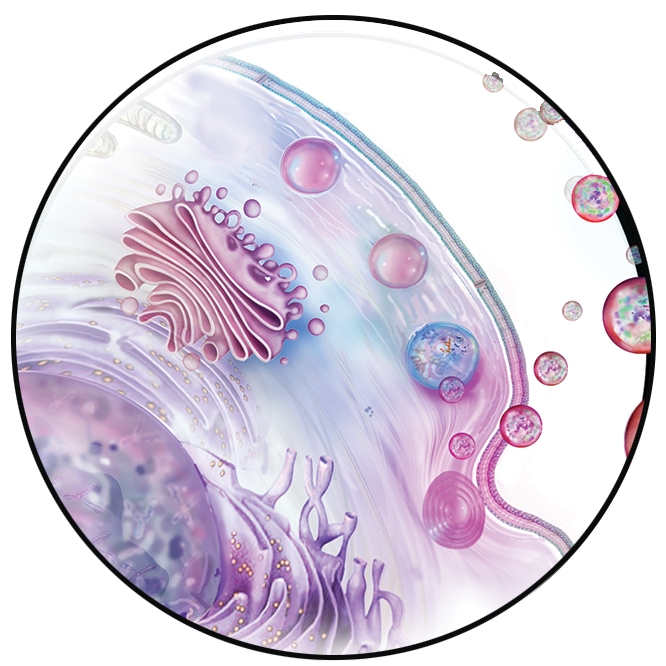Exosomes
What are Exosomes?
Exosomes are extracellular vesicles, meaning they exist apart from their parent cells. Many cells within the human body are capable of generating exosomes; however, the exosomes used in therapeutic applications are derived from either adult bone marrow stem cells or voluntarily-donated placental tissue.
Exosomes are unique in that they contain molecular components of their parent cell. These components include genetic information such as RNA, lipids, and proteins which are essential to intercellular communication processes. Because of their role in intercellular communication, exosomes are often referred to as “intercellular messengers,” meaning they are highly efficient at transferring information between cells. It is this unique ability that makes exosomes so important to the healing process. Because they are derived from young mesenchymal stem cells, exosomes may be more effective than older, autologous stem cells harvested from the patient.
Exosome Therapy
When used in restorative applications, exosomes function to transfer cellular information from their parent stem cells to other cells in the body. When older cells are exposed to exosomes from young, healthy stem cells, the exosomes function to transfer information that stimulates rejuvenation of the older cell. Exosomes may be used to restore tissue function in a specific treatment area, or may also be used in the treatment of systemic (whole-body) conditions.
When used in the treatment of site-specific conditions, exosomes are administered in conjunction with platelet-rich plasma, or PRP. Because PRP contains high concentrations of growth factors and cytokines necessary to accelerate the healing process, this combination treatment often provides patients with near-immediate pain relief.


